The Science Behind Mold Growth
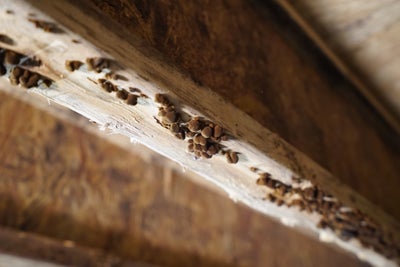
Mold growth is a common issue in homes, often leading to health problems and structural damage if not properly managed. To effectively prevent mold, it’s essential to understand the science behind its growth. Mold thrives under specific conditions, and by learning what causes it to spread, you can take the necessary steps to protect your home and maintain a healthy living environment.
Noticing problem signs in your crawl space?
Book your appointment today!
Understanding Mold
Mold is a type of fungus that thrives in damp, warm environments. It plays a crucial role in nature by breaking down dead organic matter, such as leaves and wood, returning nutrients to the soil. This natural recycling process is essential for ecosystem balance, as mold helps decompose materials that would otherwise accumulate. However, when mold finds its way into homes, it can become a problem. The same characteristics that make mold beneficial—its ability to grow rapidly and break down organic materials—can lead to damage and health risks indoors. Understanding mold’s role in the environment highlights the importance of controlling its growth in your home.
Conditions For Mold Growth
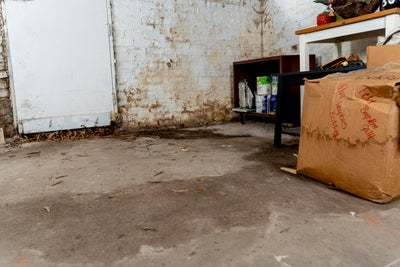
Mold growth requires several key conditions to thrive, including moisture, temperature, organic materials, and oxygen. Moisture is the most critical factor; mold spores need damp environments to begin colonizing, which can come from leaks, high humidity, or condensation. Temperature also plays a big role because most molds thrive in conditions between 15-27°C, which aligns with the typical indoor environment. Organic materials like wood, drywall, and fabrics provide a food source for mold spores, allowing them to multiply and spread. Finally, oxygen is necessary for mold to grow, making almost any area susceptible if the other conditions are met. Understanding these factors is crucial in preventing and controlling mold growth in homes.
The Mold Lifecycle
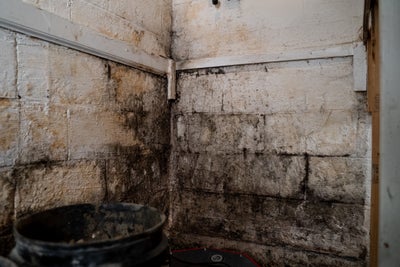
The mold life cycle starts with tiny spores landing on a damp surface. Once there, they absorb moisture and nutrients from organic materials like wood or drywall, causing them to grow and form new mold colonies. These colonies then release more spores into the air, allowing mold to spread and repeat the cycle. The process speeds up with high humidity, warmth, and poor ventilation, creating the perfect environment for mold to thrive. On the flip side, dry conditions, cold temperatures, and good airflow can slow down or even stop mold growth. Knowing these factors helps in keeping mold at bay and maintain a healthy home.
Danger of Mold in the Home
Mold in the home isn’t just an eyesore—it’s a serious threat to both your health and your property. Exposure to mold spores can lead to allergic reactions, asthma flare-ups, and chronic respiratory issues, especially in vulnerable individuals such as children, the elderly, and those with weakened immune systems. Mold also eats away at your home’s structure. Mold feeds on organic materials like wood, drywall, and insulation, causing decay and weakening the structural integrity of your home. This can lead to costly repairs and even compromise the safety of your living space.
Mold growth also significantly reduces indoor air quality, filling your home with musty odours and harmful spores. The result is a home that’s not only unhealthy to live in but also less valuable on the market. Tackling mold growth isn’t just about aesthetics—it’s about protecting your health, and your home’s structure, and maintaining a safe, clean environment for everyone.
The Risks of DIY Mold Removal
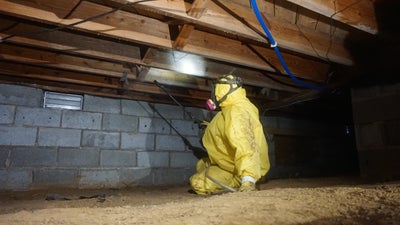
DIY mold removal might sound like a quick fix, but it’s a dangerous gamble that can backfire in a big way. When you tackle mold without the right knowledge or tools, you risk spreading mold spores all over your home, making the contamination worse and harder to control. Most DIY methods don’t get rid of all the mold, allowing it to grow back fast and spread even more. Plus, handling mold without proper protective gear puts your health on the line, exposing you to nasty respiratory issues, allergies, and skin irritation.
Some molds, like black mold, are especially toxic and need professional handling to ensure safety. DIY jobs also often miss hidden mold lurking in walls, ceilings, and HVAC systems—places where it can thrive unnoticed and cause serious damage to your home’s structure and air quality. DIY mold removal is a risky move that can end up costing you more in the long run. For a safe, thorough fix, professional help is the way to go.
Mold Growth Prevention
Prevention starts with a proactive approach. Mold thrives in damp, poorly ventilated spaces, so taking steps to keep your home dry and well-maintained is crucial. Here’s how to keep mold from becoming a problem in your home:
Control Moisture: Mold loves moisture, so keep humidity levels in check. Use dehumidifiers in damp areas like basements and bathrooms. Fix any leaks immediately—don’t give mold the chance to take hold.
Ensure Proper Ventilation: Good airflow prevents mold from settling in. Keep your home well-ventilated, especially in high-moisture areas like kitchens, bathrooms, and laundry rooms. Use exhaust fans and open windows to keep the air moving and reduce humidity.
Waterproof and Seal: Seal your home against water intrusion. Waterproof basements, crawl spaces, and other vulnerable areas. A dry home is a mold-free home!
Regular Maintenance and Inspections: Stay on top of regular maintenance. Inspect moisture-prone areas like basements and crawl spaces frequently. Catch problems early before they turn into a mold crisis.
Keeping mold out of your home starts with staying proactive and vigilant. By managing moisture, ensuring good ventilation, waterproofing, and performing regular inspections, you can protect your space from unwanted mold growth.
Trust Groundworks to Prevent Mold Growth in Your Home
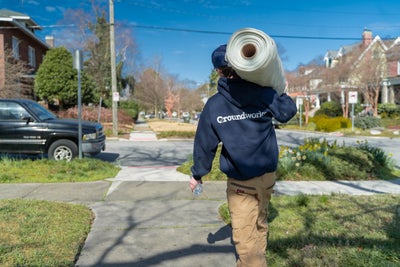
Mold is more than a nasty surprise—it’s a threat to your health and your home. Understanding how mold grows, and spreads is the first step to stopping it in its tracks. If you do spot mold, don’t risk DIY—most at-home fixes just make things worse. Mold removal is best left to the pros.
Groundworks offers free inspections and estimates to help you find the best solution to prevent the growth of mold in your home. Don’t wait for mold to wreak havoc on your home and health. Call Groundworks today to schedule your free inspection and keep your home safe, dry, and mold-free!
Noticing problem signs in your crawl space?
Book your appointment today!
Mold Growth FAQ
Musty smells in basements are typically caused by excess moisture, which creates an ideal environment for mold and mildew growth. Other culprits include standing water from leaks, poor ventilation, and stored items that retain moisture.
Failure to clean up a basement flood can lead to ongoing moisture issues and damage to any stored items. These possessions will become susceptible to foul odors and potentially hazardous mold growth, posing health risks. It is highly advisable to promptly address a basement flood to mitigate further harm.
Unfortunately, once mold takes hold in basement carpeting, removal and replacement are typically necessary. Drying the surface layer alone is ineffective, as mold can continue to thrive and spread beneath. To avoid this issue, prioritize waterproofing the basement before installing carpet. If mold is already present, it’s best to remove and replace the affected carpeting.